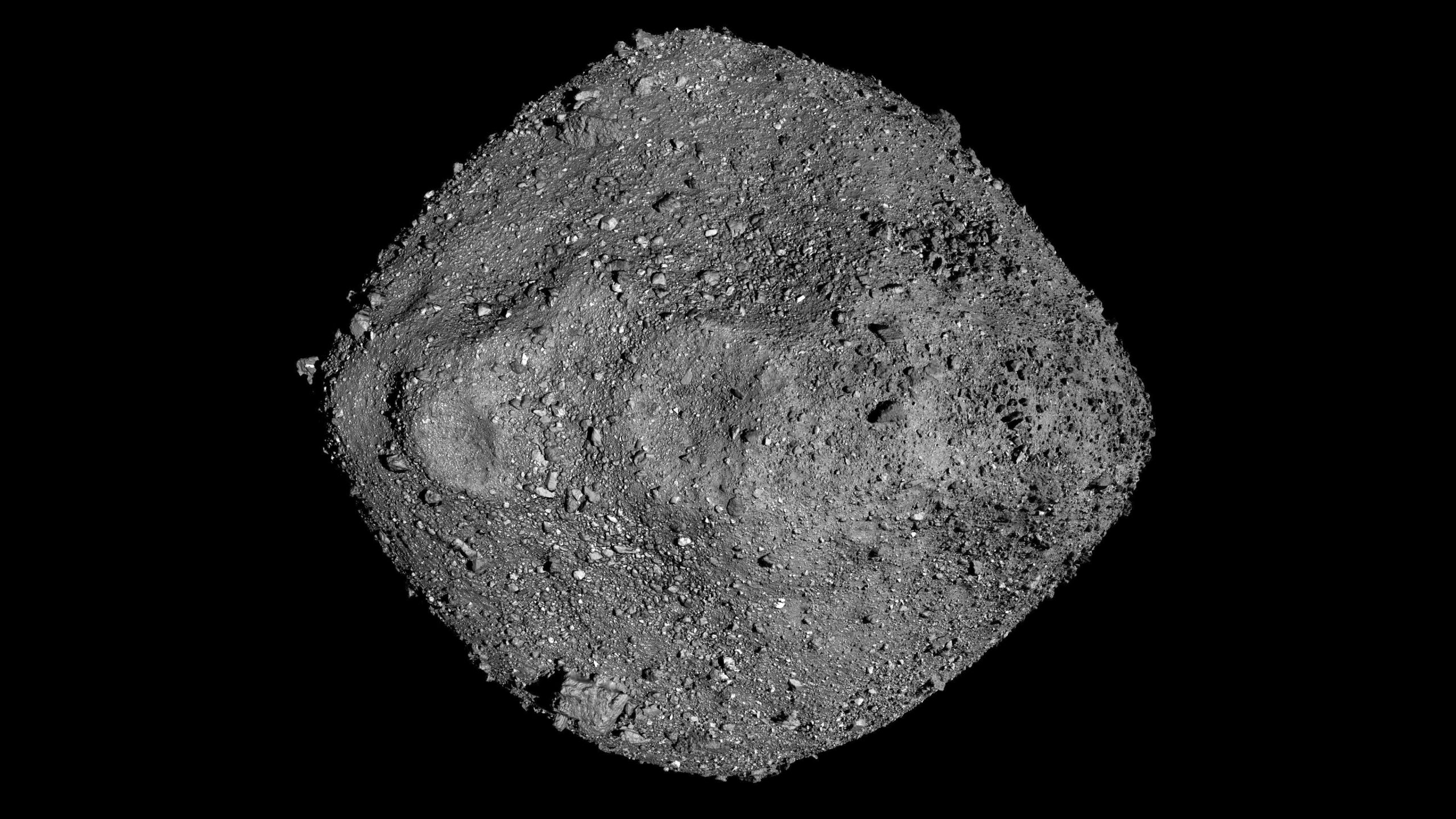~에 의해
이 소행성 베누 모자이크는 NASA의 OSIRIS-REx 우주선이 2년 이상 소행성에 근접해 있어 관측한 결과를 바탕으로 만들어졌습니다. 출처: NASA/Goddard/애리조나 대학교
최근 학자들은 NASA의 OSIRIS-REx 임무 그는 표면 재생이 지구보다 훨씬 더 빠르게 소행성에서 일어난다는 것을 발견했습니다. 그가 촬영한 소행성 베누의 암석 균열을 고해상도로 분석해[{” attribute=””>OSIRIS-REx spacecraft, the researchers discovered that the Sun’s heat fractures rocks on Bennu in only 10,000 to 100,000 years. With the use of this knowledge, scientists will be able to better predict the time it takes boulders on asteroids like Bennu to fragment into smaller pieces, some of which may eject into space while others may remain on the asteroid’s surface.
Although tens of thousands of years might sound pretty slow, “we thought surface regeneration on asteroids took a few millions of years,” said Marco Delbo, senior scientist at Université Côte d’Azur, CNRS, Observatoire de la Côte d’Azur, Laboratoire Lagrange, Nice, France, and lead author of a paper published in June 2022 in the journal Nature Geoscience. “We were surprised to learn that the aging and weathering process on asteroids happens so quickly, geologically speaking.”
Although landslides, volcanoes, and earthquakes may abruptly alter the Earth’s surface, most changes occur gradually. Over millions of years, water, wind, and temperature changes slowly erode rock to create new surfaces. For instance, if you hiked into the Grand Canyon, you would see distinct rock layers; the top layers tend to be the youngest rocks, dating around 270 million years old, and the layers at the bottom of the canyon are the oldest, about 1.8 billion years old. The Colorado River has been chiseling away at rocks in the Grand Canyon for 5 million to 6 million years, according to the U.S. National Park Service.

The PolyCam aboard NASA’s OSIRIS-REx spacecraft provided high-resolution, microscope-like images of asteroid Bennu’s surface. This made it possible for researchers to map more than 1,500 rock fractures. Credit: NASA/Goddard/University of Arizona
Rapid temperature changes on asteroid Bennu create internal stress that fractures and breaks down rocks, comparable to how a cold glass breaks under hot water. On Bennu, the Sun rises every 4.3 hours. At the equator, daytime highs can reach almost 260°F (about 127°C), and nighttime lows plummet to nearly minus 10°F (about minus 23°C).
OSIRIS-REx scientists spotted cracks in the rocks in spacecraft images from the first surveys of the asteroid. All of the fractures seemed to point in the same direction, “a distinct signature that temperature shocks between the day and the night could be the cause,” said Delbo.

Same image as above, but with the fractures highlighted in red. Credit: NASA/Goddard/University of Arizona
Delbo and his colleagues measured the length and angles of more than 1,500 fractures in OSIRIS-REx images by hand: some shorter than a tennis racket, others longer than a tennis court. They found the fractures predominantly align in the northwest-southeast direction, indicating they were caused by the Sun, which is shown here to be the primary force changing Bennu’s landscape.
“We were surprised to learn that the aging and weathering process on asteroids happens so quickly, geologically speaking.” — Marco Delbo
“If landslides or impacts were moving boulders faster than the boulders were cracking, the fractures would point in random directions,” said Delbo.
The research team used a computer model and their fracture measurements to calculate the 10,000- to 100,000-year timeframe for thermal fractures to propagate and split rocks.
“The thermal fractures on Bennu are quite similar to what we find on Earth and on Mars in terms of how they form,” said Christophe Matonti, a co-author of the paper at Université Côte d’Azur, CNRS, Observatoire de la Côte d’Azur, Géoazur, Sophia-Antipolis, Valbonne, France. “It is fascinating to see that they can exist and are similar in very ‘exotic’ physical conditions [low gravity, no atmosphere]화성과 비교해도.
Jason Dworkin, OSIRIS-REx 프로젝트 과학자 NASA 고다드 우주 비행 센터 메릴랜드주 그린벨트에서
OSIRIS-REx(Origins, Spectral Interpretation, Resource Identification, Security-Regolith Explorer) Bennu 샘플을 지구로 반환합니다. 2023년 9월 24일. “표본을 직접 연구할 수 있게 되면 표면의 나이에 대해 더 자세히 알 수 있을 것”이라고 Dworkin은 말했습니다.
참조: Marco Delpo, Kevin J Walsh, Christoph Mattonti, Justin Wilkerson, Maurizio Pagola, Manar Lion, Chrisa Avdelido, Ronald Lewis Blues, Karina A. Bennett, Harold의 “빠른 소행성 표면 진화를 나타내는 Bennu 암석의 골절 정렬” C. Connolly Jr 및 Daniela Dellagiostina, Dathon R. Gulish, Jimmy L. Molaro, Bashar Rizk 및 Stephen R. 자연 지구 과학.
DOI: 10.1038 / s41561-022-00940-3

“경순은 통찰력 있고 사악한 사상가로, 다양한 음악 장르에 깊은 지식을 가지고 있습니다. 힙스터 문화와 자연스럽게 어우러지는 그의 스타일은 독특합니다. 그는 베이컨을 좋아하며, 인터넷 세계에서도 활발한 활동을 보여줍니다. 그의 내성적인 성격은 그의 글에서도 잘 드러납니다.”
